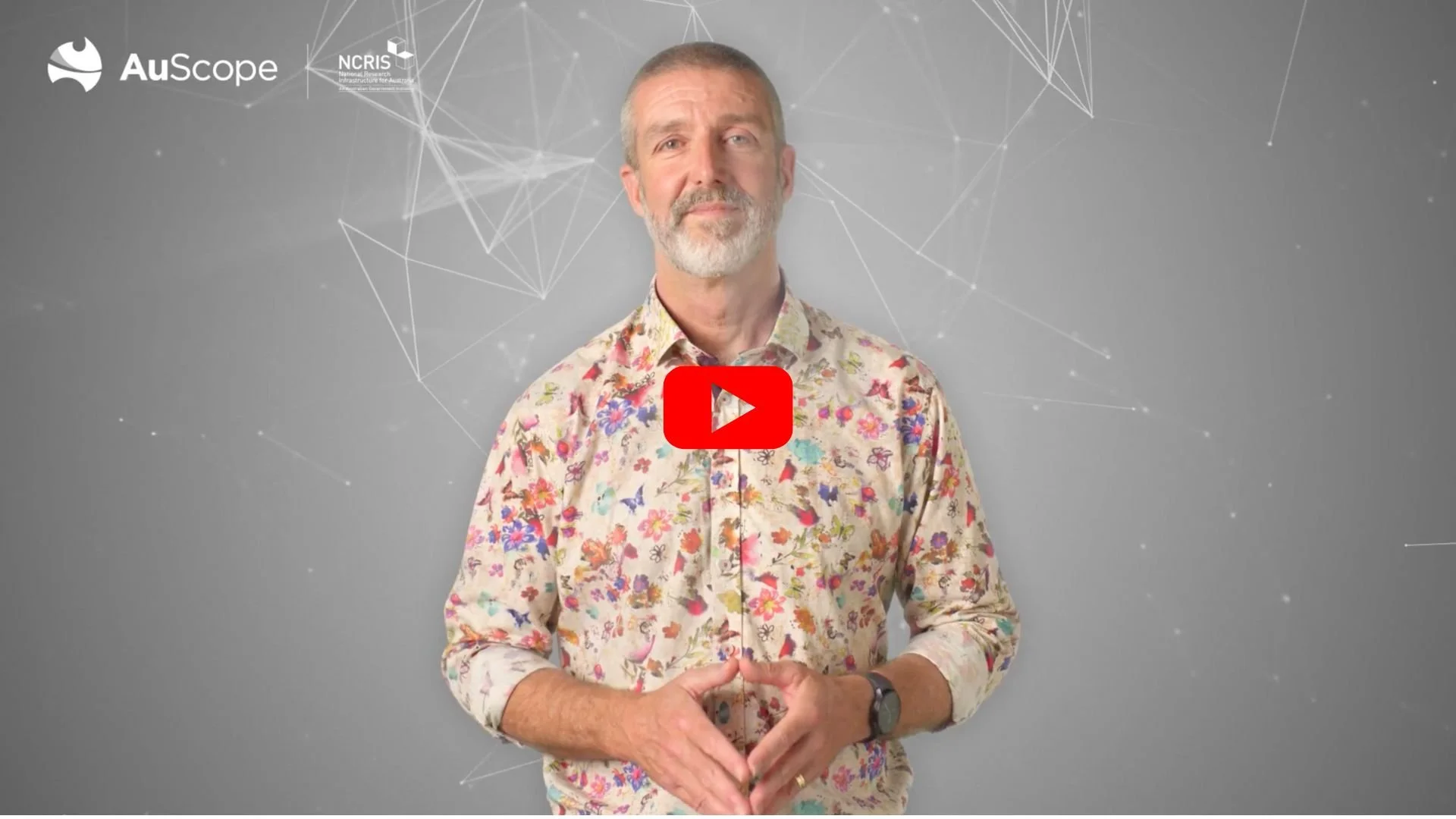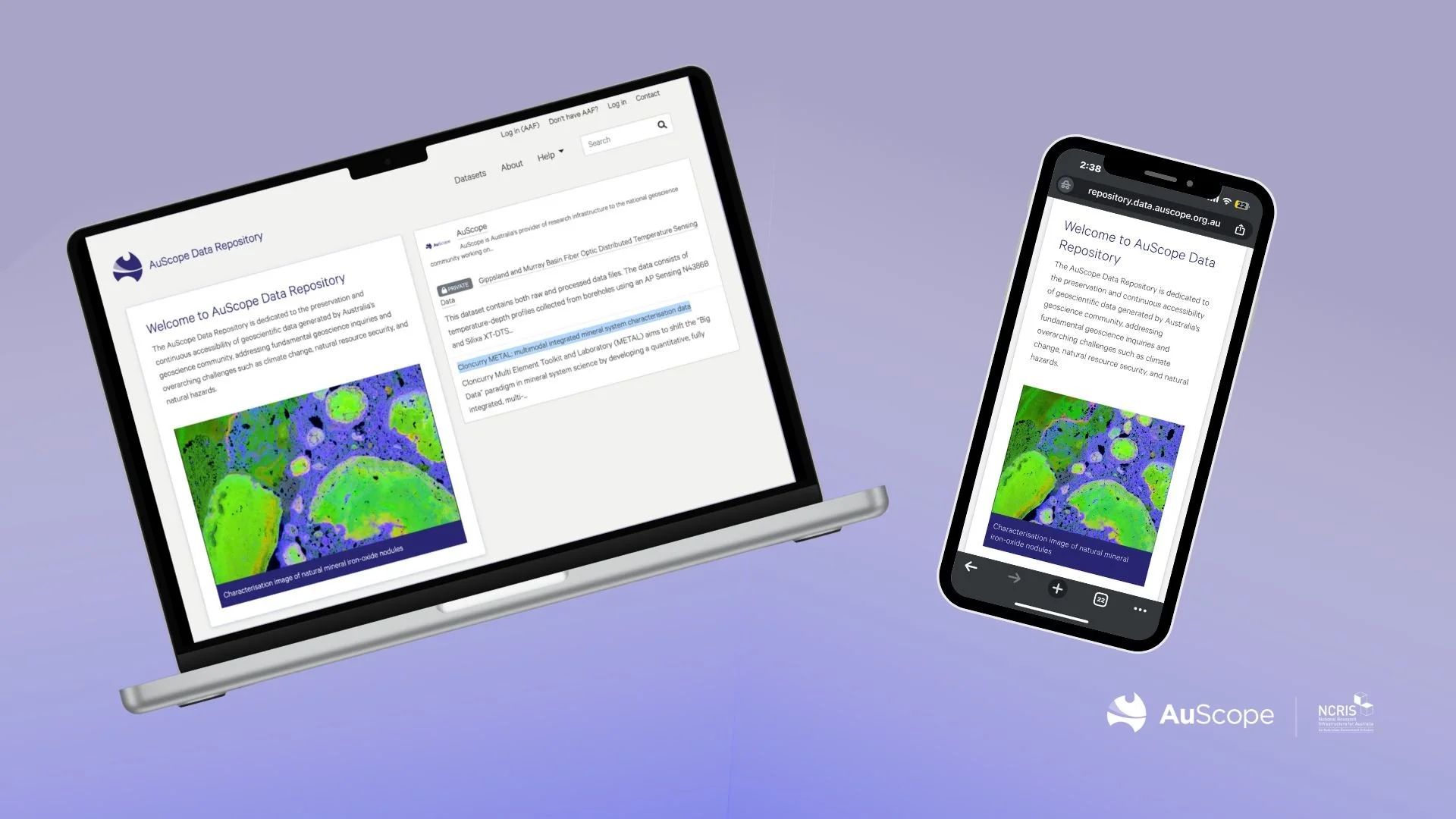Annual Highlights 2024
Discover our 2024 Highlights Video with transcript below. Image: AuScope
Get ready to dive into the highlights of AuScope enabled research! Our 2024 video recap takes you through the year’s science innovations. From powerful models that re-imagine timelines to tracing altar stones in Europe to lab upgrades and community-driven projects. Join us in celebrating the impact and reach of AuScope via our end of year highlights video and transcript below.
Science News
Today, we're showcasing some of our biggest achievements from the past year, and we do this from the unceded lands of the Wurundjeri people. I pay my respects to all First Nation elders, Australia's original geoscientists.
In previous highlights, I've focused on new funding opportunities and outcomes. This year, I'd like to focus on the variety of groundbreaking research we've enabled over the last 12 months.
Simulation, Analysis & Modelling’s GPlates software has enabled the generation of a 1.8 billion-year tectonic reconstruction, traced Mars' impact on Milankovitch cycles via giant whirlpools captured in sediments, explored the duration and cause of snowball Earth glaciation, and discovered a 36 million-year geological cycle that drives biodiversity.
Dr Adriana Dutkiewicz made history with her groundbreaking research on seafloor sediment transport using GPlates, resulting in her being the first female to be awarded the prestigious Australian Academy of Science’s Mawson medal.
Earth Composition & Evolution's geochronology laboratories at Curtin University have found Earth's hydrological cycle began as early as 4 billion years ago and that the age of our iron ore may be a billion years younger than previously thought.
Researchers from Curtin also showed that the altar stone from Stonehenge in Wiltshire was transported over 750 kilometres by its Neolithic builders from its geological origin in Scotland, and have been included in NASA's multinational Science Party that is analysing incredibly valuable samples collected in the Bennu asteroid return mission.
This year, we enabled several geophysical monitoring initiatives by supplying instruments for the WA government's WAarray and WA Auslan projects. We've installed MT instruments in Morocco's Atlas Mountains and Antarctica and supported a CRC-P project through 150 nodal seismometer deployments on the Eyre Peninsula, investigating natural hydrogen accumulation in South Australia with H2EX.
Shallow heat flow measurements were made using heat needles at TERN’s critical zone observatories to characterise heat fluxes through the poorly understood critical zone ecosystems.
The Department of the Victorian Surveyor General used the AGOS GNSS array to map seismogenic zones in Victoria. Our passive seismic team at ANU has continued to work with the distributed acoustic centre in collaboration with colleagues from New Zealand and Germany. This experiment aims to record ground motion from landslides, avalanches, and earthquakes using telecommunication networks around the Alpine Fault in New Zealand.
International
A significant outcome for new AuScope partner ANZIC was the signing of an MOU ensuring Australian membership in the International Continental Drilling Program (ICDP) and providing access for Australian researchers to this high-impact international collaborative initiative.
We have also recently extended our international collaboration agreement with the European Plate Observing System (EPOS) to include our American equivalent, EarthScope, providing a platform to build a global research infrastructure of observational geoscience.
Outreach & Engagement
AuScope is proud of the role we now play in developing the next generation of geoscientists. Our outreach programs are growing with new magnetometers and geochemistry in schools programs, and for the first time, all 50 school-based AuSIS seismometers are delivering real-time data, including the system at the Ernabella Anangu School school on APY lands in South Australia.
We were also able, through ANZIC, to support eight Indigenous geoscientists joining the JR Academy, a two-week science at sea experience on board the last cruise of the JOIDES resolution from Naples to Amsterdam.
And finally, we continue to support the National Camp for Applied Geophysics Excellence.
Data
Towards our ongoing goal to provide fair research data, we've enhanced our data curation and delivering capacity with the development of a new research data repository with CSIRO and a new model output repository called M@TE with the University of Sydney. This will allow model outputs to be stored and discovered, reducing the need for running computationally intensive simulations.
We have enhanced our office AusGeochem platform, which is now core trust seal certified, continued our partnership with NCI, growing our data collection referenced in our NCI catalogue, and have completed the European Commission-funded World Fair project developing FAIR implementation profiles for geochemistry data.
New opportunities
Contracts have been developed for the five new activities funded under last year's RIIP. Our delivery partners have secured significant co-investment, including $2.8 million from the Queensland Government and the University of Queensland into the CoastRI drone platform and $4.5 million through the Western Australian Government, Curtin University and UWA into EarthBank.
We continue to support the development of new pilot projects through our Opportunity Fund. This year, we enabled measurement of the impacts of climate change on the Antarctic ice sheet through monitoring and drilling of glaciers, provided new capabilities for characterising dating and visualising critical metals and supported a novel analytical facility for assessing the connectivity and evolution of groundwater systems.
HQ
In news from HQ, we welcome two new staff members to our HQ team, Dr Ben Kay and Daniel Vlahek, who boost our geophysics and operational capacity.
We also participated in the CSIRO on Prime Program, speaking to many users who defined our community's barriers to using geoscience research infrastructure. This has resulted in the preparation of new AuScope translation and digital strategies.
You can learn more about our work and the exciting research that it enables via our website.
I close by thanking our HQ team, project teams, the board, users, members and NCRIS for the work you continue to do each year to make AuScope a unique national asset in support of Australian geoscience research and Australia's sustainable and resilient future.
A sample of AuScope’s 2024 enabled academic papers
Onset of the Earth’s hydrological cycle four billion years ago or earlier | Nature Geoscience
A billion-year shift in the formation of Earth’s largest ore deposits | Proceedings of the National Academy of Sciences
A Scottish provenance for the Altar Stone of Stonehenge | Nature
Deep-sea hiatus record reveals orbital pacing by 2.4 Myr eccentricity grand cycles | Nature Communications
Submarine volcanism along shallow ridges did not drive Cryogenian cap carbonate formation | Geology
Ishtar Terra highlands on Venus raised by craton-like formation mechanisms | Nature Geoscience
Atomic-scale Element and Isotopic Investigation of 25Mg-rich Stardust from an H-burning Supernova | The Astrophysical Journal
WA Array: A High-Resolution Passive-Source Seismic Survey to Image the West Australian Lithosphere | Seismological Research Letters
Narrated by: Dr Tim Rawling
Filmed by: Visual Domain
Edited: Philomena Manifold
FURTHER INFORMATION
National Collaborative Research Infrastructure Strategy (NCRIS)




